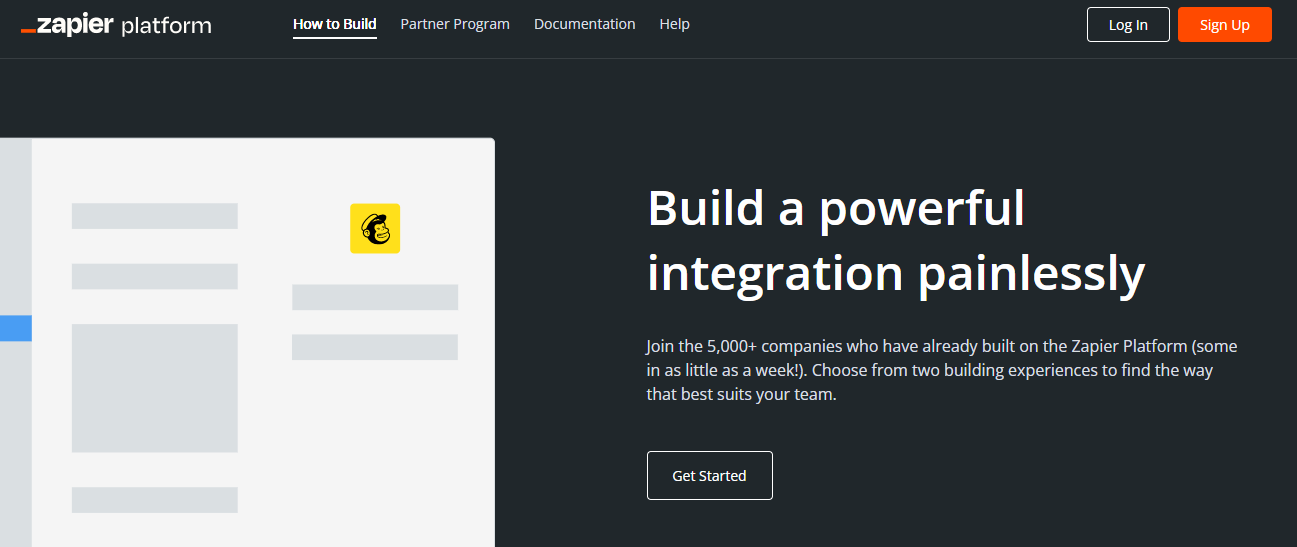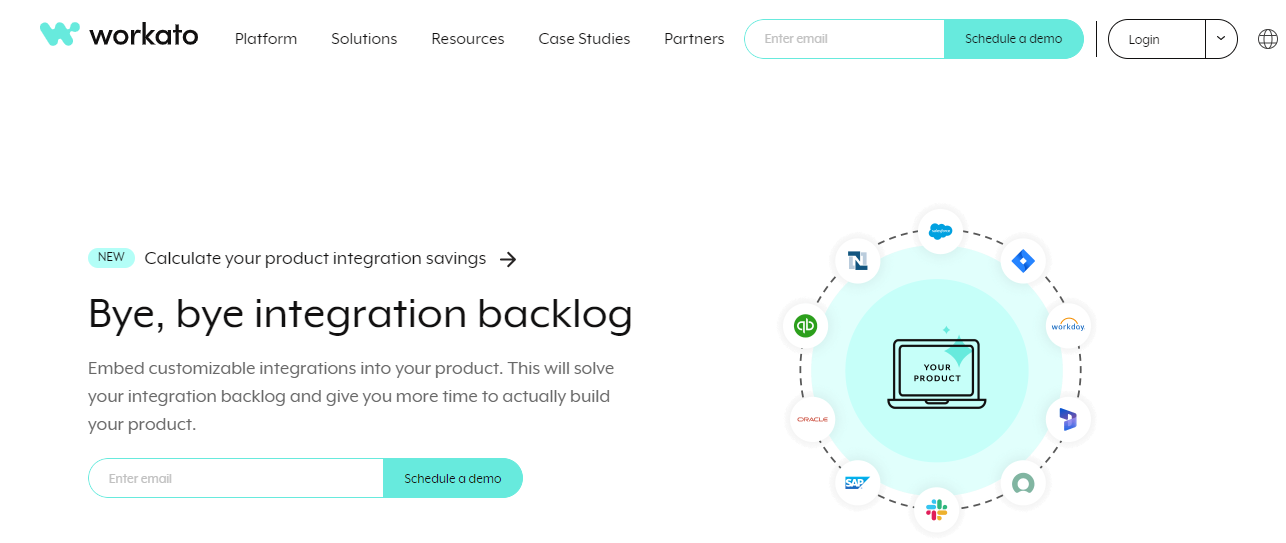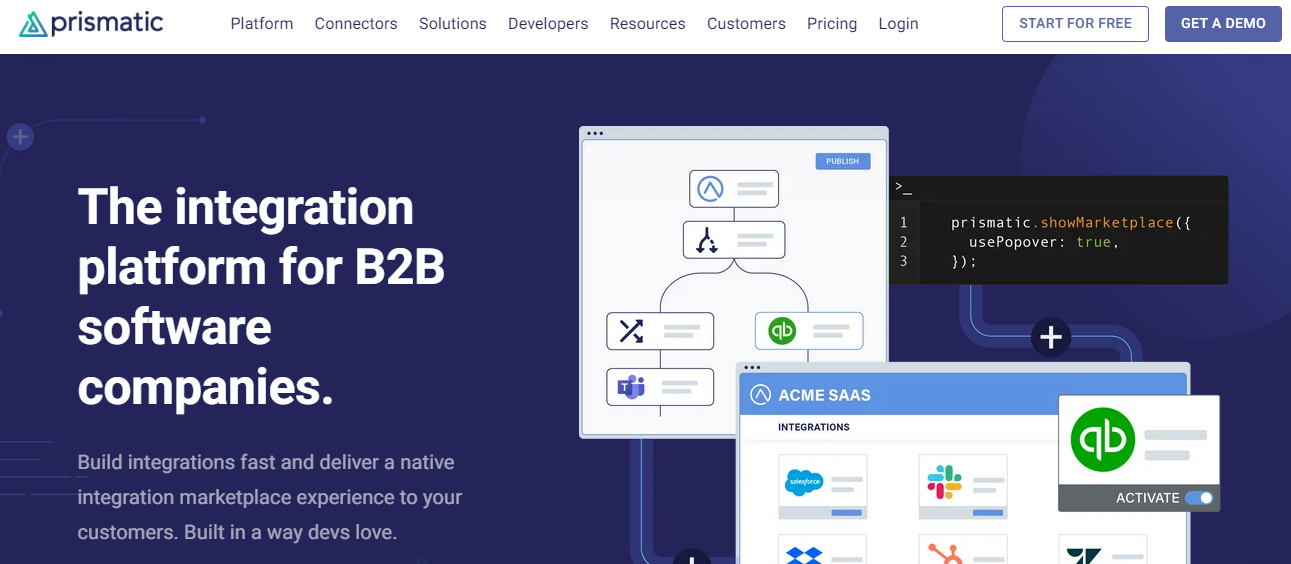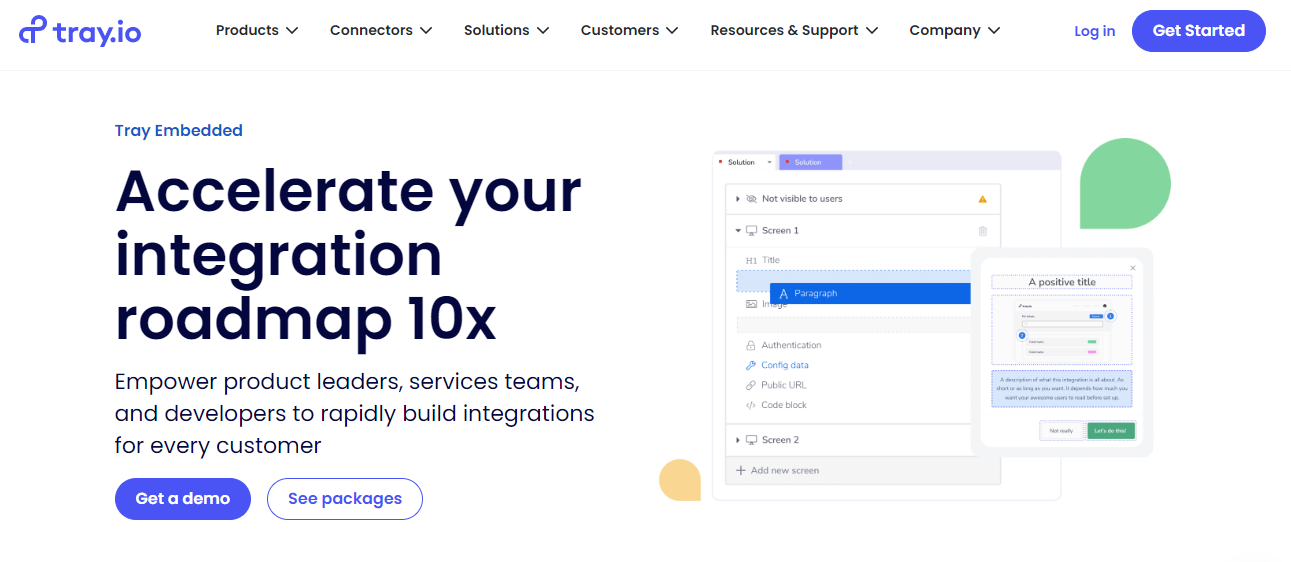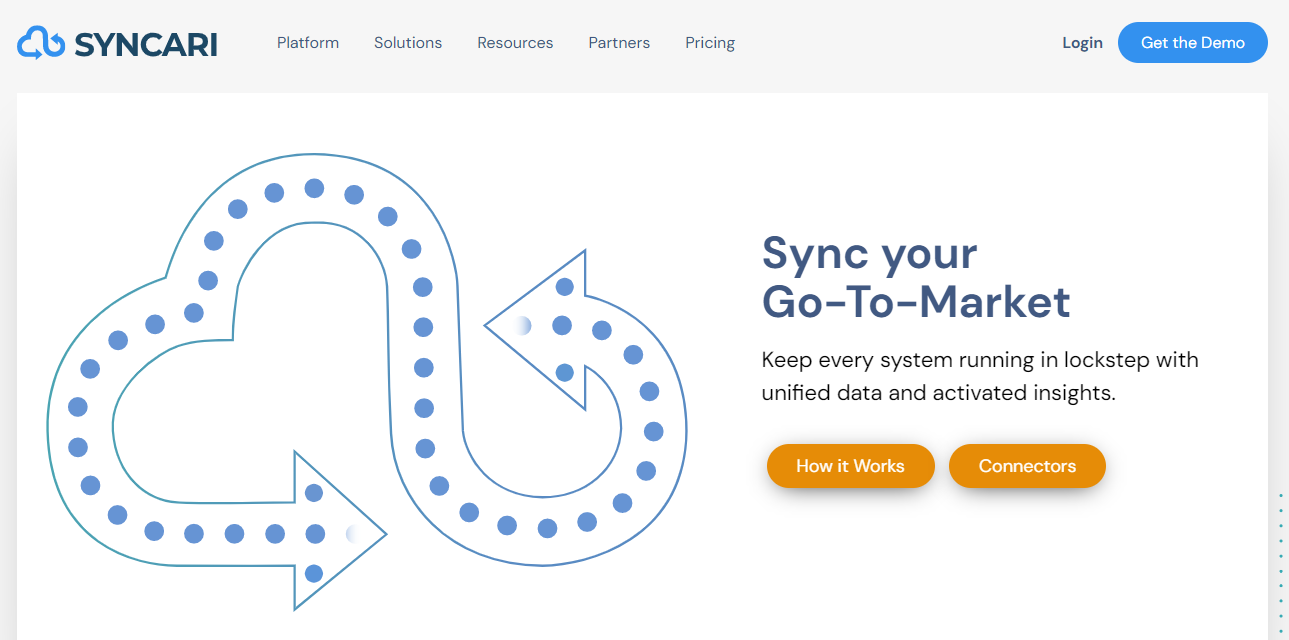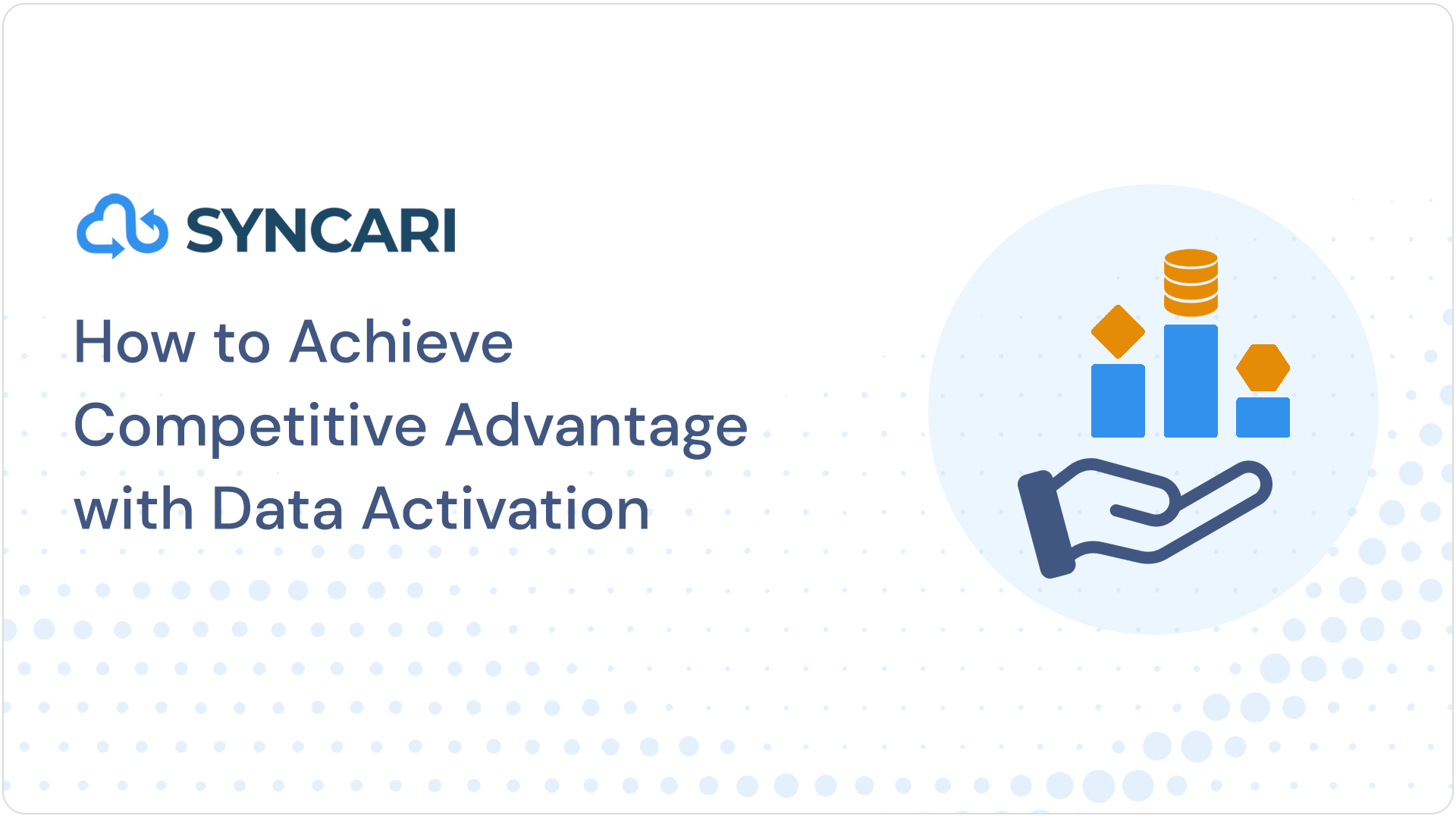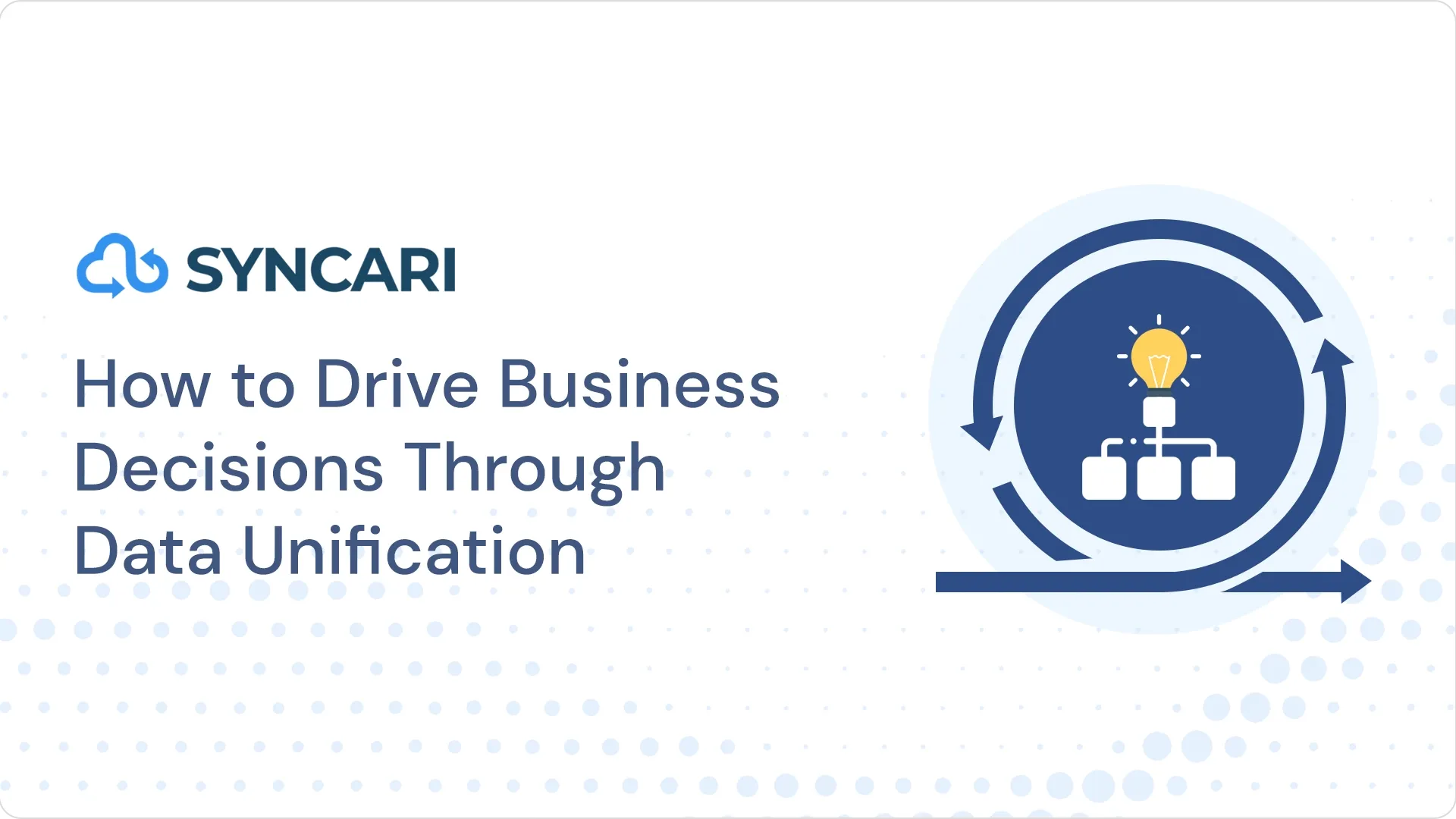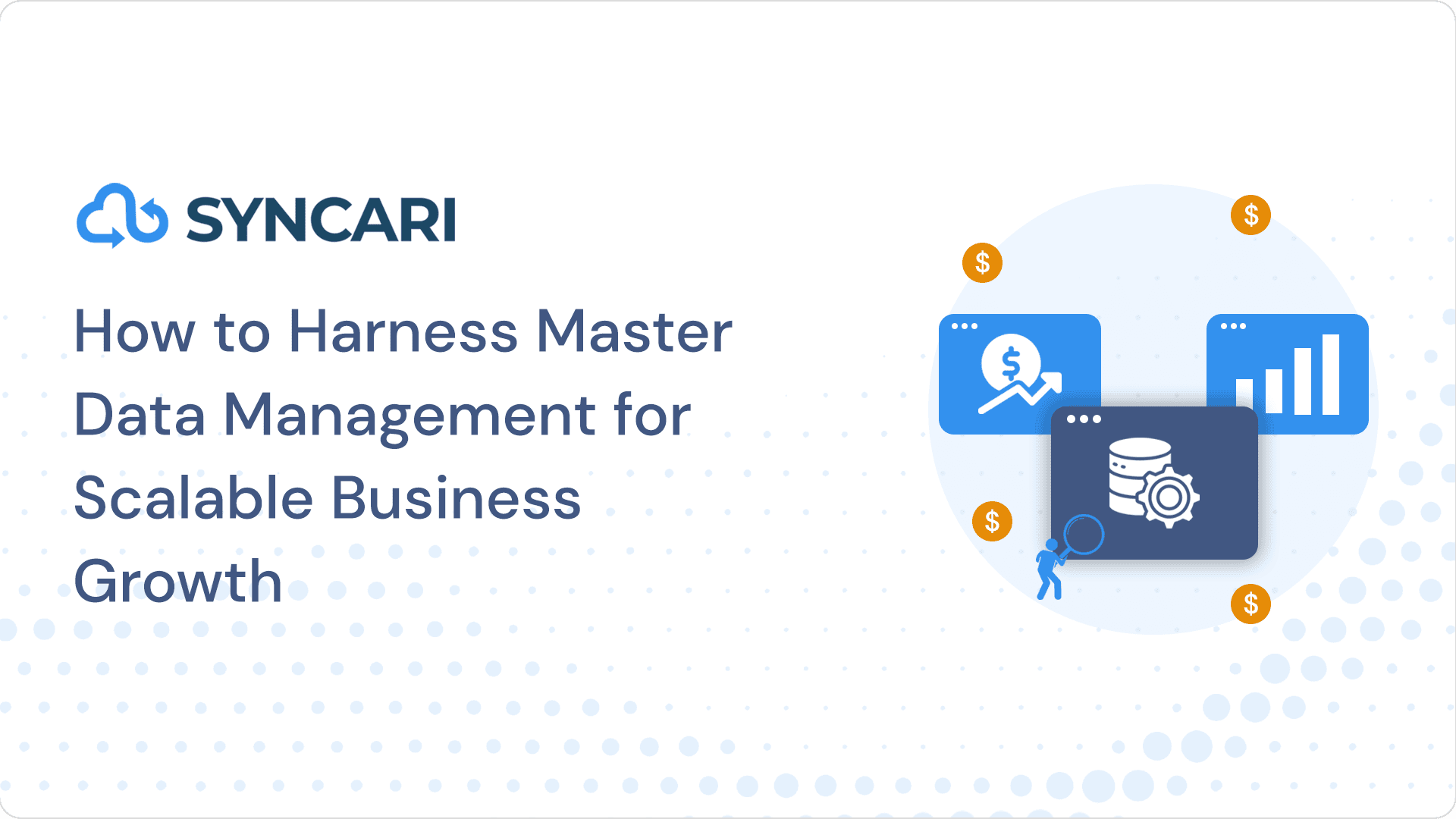In the 21st century, where data reigns supreme, effectively managing and harnessing its potential has become necessary for companies across industries.
As organizations strive to optimize their operations, streamline processes, and drive meaningful insights, the role of embedded integration platforms has emerged as a game-changer.
These robust platforms seamlessly connect disparate systems, enabling smooth data flow and unlocking new levels of efficiency. This definitive guide delves into the best embedded integration platforms, showcasing the top five stand-out contenders.
This blog will equip you with the knowledge you need to make informed decisions about selecting the right embedded integration platform for your requirements. Join us as we explore each platform’s key strengths.
We’ll shed light on how these cutting-edge solutions empower organizations to unleash the true potential of their data and drive business success.
By the end of this guide, you’ll have a solid understanding of the top embedded integration platforms and be ready to take the next step toward achieving seamless connectivity within your software ecosystem.
What is an Embedded Integration Platform?

Embedded integrations are a powerful means of connecting your software product with the applications used by your customers.
With embedded integration platforms, you can swiftly create API integrations within your software, enabling seamless communication with your customers’ tech stacks.
The advantage of embedded integration platforms lies in their ability to make your product an integral part of your customers’ software ecosystem.
You create a seamless flow of mission-critical data by establishing active integrations between your software and your customers’ solution stack. When delivering integrations to your customers, you have various options to consider.
Some software companies opt to build integrations in-house, utilizing their own engineering resources. Others choose to work with external systems integrators (SIs) who specialize in managing integrations.
Alternatively, you can leverage a third-party API integration platform, which provides a faster and more streamlined approach to delivering integrations.
How embedded integration platforms differ from traditional integration approaches
An embedded integration platform differs from traditional integration approaches in several ways. These platforms empower business users to streamline their integration processes, enhance productivity, and deliver a seamless and connected user experience.
Native Integrations
Embedded integration platforms provide native integration capabilities within a software application or platform.
In contrast, traditional integration approaches often involve separate tools, middleware, or custom code to connect and synchronize data between systems.
Simplified Development
With an embedded integration platform, you can leverage pre-built connectors, APIs, and workflows designed specifically for integration. This simplifies the development process and reduces the need for extensive coding or complex configurations.
Seamless User Experience
The best embedded integration platforms offer a seamless user experience by integrating directly into the software application’s user interface.
Users can access and manage integrations within the familiar environment of the application, eliminating the need to switch between multiple tools or interfaces.
Faster Deployment
Traditional integration approaches often require significant development and implementation efforts, including setting up infrastructure, configuring middleware, and writing custom code.
An embedded integration platform provides a more streamlined and efficient deployment process, enabling faster time-to-market and quicker adoption of integrations.
Flexibility and Customization
The best embedded integration platforms offer flexibility in terms of customization and adaptability.
They allow you to tailor integrations to meet business requirements, define data mapping, and configure workflows without extensive coding or reliance on external resources.
Factors to Consider When Choosing an Embedded Integration Platform
When it comes to choosing one platform among the best embedded integration platforms, there are several essential factors that you should consider. Let’s break them down in simple terms:
Scalability and Performance Capabilities
It’s crucial to ensure that your selected platform can handle your growing needs and perform efficiently, even as your data and integration requirements increase. You want a solution that can scale along with your business.
Customization Options and Flexibility
When selecting a platform, looking for one that can customize integrations to match your specific business processes is essential. Flexibility is vital, allowing you to tailor integration workflows to your unique requirements.
Supported Integration Protocols and Connectors
It’s vital to check if the platform supports your business’s integration protocols and connectors. This ensures compatibility with the systems and applications you need to connect with, making the integration process smoother.
Security and Data Privacy Considerations
Data security is paramount, so ensure the platform has robust security measures. Look for features such as encryption, access controls, and compliance with relevant data protection regulations to safeguard your sensitive information.
Pricing Models and Licensing
Evaluating the platform’s pricing structure and licensing options is essential to ensure they align with your budget and business model. Consider factors such as subscription fees, usage-based pricing, or any additional costs associated with the platform.
Considering these factors, you can make an educated decision when choosing an embedded integration platform that suits your scalability needs, offers customization options, supports the necessary protocols, prioritizes security, and fits your budget.
The Top 5 Embedded Integration Platforms
These five best embedded integration platforms empower businesses to streamline workflows, automate processes, and ensure seamless data exchange between applications.
Zapier
Zapier makes workflow automation between different applications easy for you without needing any coding skills. It has a user-friendly interface that allows you to create integrations, known as “Zaps,” in a straightforward way.
With Zapier, you can automate repetitive tasks and streamline your work processes across multiple apps.
Strengths:
- User-friendly interface: Zapier offers a simple, intuitive interface allowing users to create integrations without coding knowledge.
- Extensive app ecosystem: It supports a wide range of apps, making connecting and automating workflows between various applications easy.
- Quick setup: Zapier provides pre-built templates and workflows for rapid integration deployment.
Workato
Workato is a platform that helps you integrate your applications, data, and processes. It offers an intuitive interface for building complex integrations and workflows without extensive technical knowledge.
Workato empowers you to automate tasks, synchronize data, and ensure smooth communication between various systems.
Strengths:
- Robust integration capabilities: Workato enables businesses to build complex integrations, workflows, and automation across multiple systems and applications.
- Data-driven automation: It offers robust data mapping and transformation capabilities, allowing users to manipulate and synchronize data effectively.
- Enterprise-grade security: Workato prioritizes security and compliance, providing features such as encryption, access controls, and data governance.
Prismatic
Prismatic simplifies integration by providing a visual interface that connects different applications easily. With its drag-and-drop functionality, you can create integrations without writing complex code.
Prismatic offers pre-built connectors and templates, making integration development faster and more accessible.
Strengths:
- Visual interface: Prismatic’s drag-and-drop interface makes it easy for users to create integrations visually, eliminating the need for complex coding.
- Pre-built connectors and templates: It offers a library of pre-built ones, accelerating integration development and reducing time-to-value.
- Real-time monitoring and alerts: Prismatic provides real-time monitoring of integrations, ensuring proactive identification and resolution of issues.
Tray io
Tray io enables you to connect and automate workflows across your applications. It offers a flexible platform where you can create advanced integrations to meet your specific needs.
Tray io supports data transformations and provides a visual workflow builder, empowering you to build complex workflows without requiring extensive technical expertise.
Strengths:
- Flexible integration capabilities: Tray io allows for complex data transformations and manipulations, enabling users to build advanced workflows and automations.
- Scalability and performance: It offers a scalable platform to handle large data volumes and high-demand integration scenarios.
- Advanced data mapping: Tray io provides robust data mapping features, allowing users to synchronize and transform data between systems efficiently.
Syncari
Syncari is an excellent data automation platform that simplifies and streamlines your data integration and synchronization processes.
With Syncari, you can effortlessly connect and harmonize data from various systems, ensuring that your data is always accurate, up-to-date, and consistent across your organization.
By utilizing Syncari, you can automate data transfer between different applications, databases, and systems, eliminating the need for manual data entry and significantly reducing the risk of errors.
The platform boasts a user-friendly interface that makes it easy to configure and manage your data integration workflows without requiring complex coding or technical expertise.
Strengths:
- Bidirectional Data Sync: Syncari Embed stands out for powerful bidirectional data synchronization capabilities.
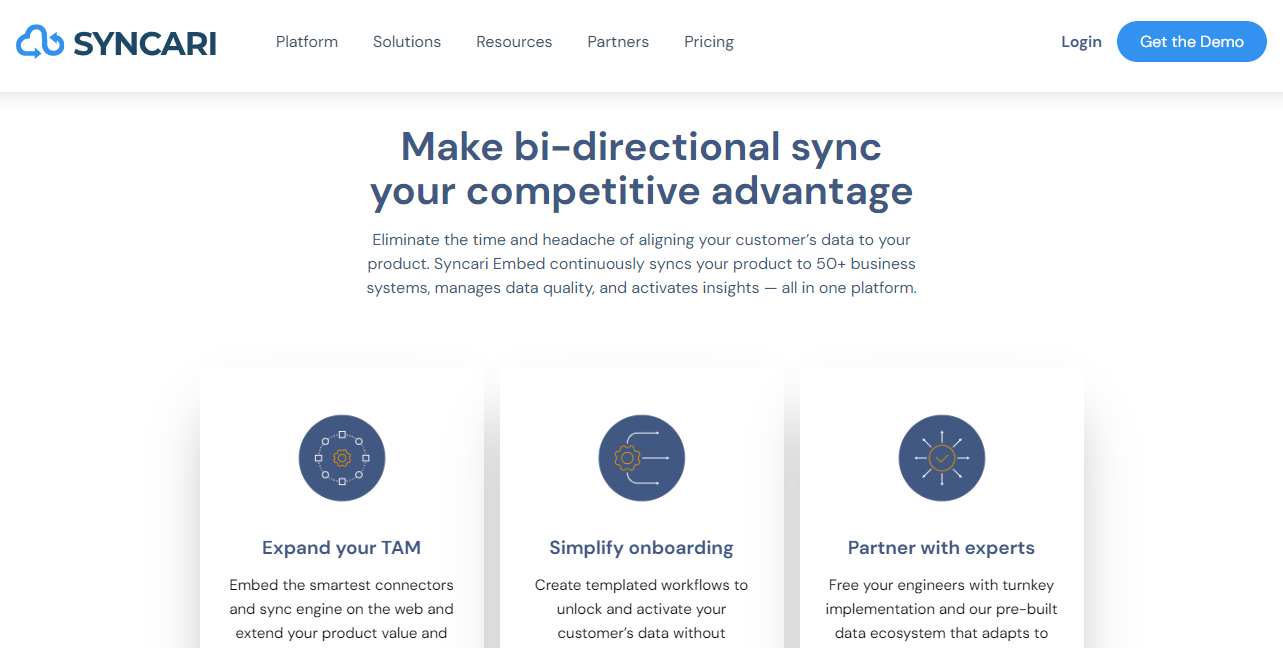 With its patented stateful sync, any changes made on the application or connected systems are automatically reflected in both directions, keeping data up-to-date across all platforms in real time.
With its patented stateful sync, any changes made on the application or connected systems are automatically reflected in both directions, keeping data up-to-date across all platforms in real time.
This saves valuable time and effort while also ensuring data accuracy and reliability.
- Data quality control: Syncari Embed also offers advanced data quality control features and tools that help ensure the highest data quality, consistency, and compliance with defined standards.
The platform enhances data’s overall integrity and reliability by identifying and resolving data discrepancies, duplicates, and other data issues.
- Multidirectional sync: Syncari is the only data integration platform that handles complex data ecosystems by supporting multidirectional sync.
This allows for seamless integration of various tools and platforms, whether syncing customer relationship management (CRM) tools with marketing automation platforms (MAP) or synchronizing data across different departments.
- Intelligent Connectors: You can leverage smart self healing connectors called Synapses. Syncari Synapses automatically ingest, align, dedupe, and manage data and schema changes across every connected system.
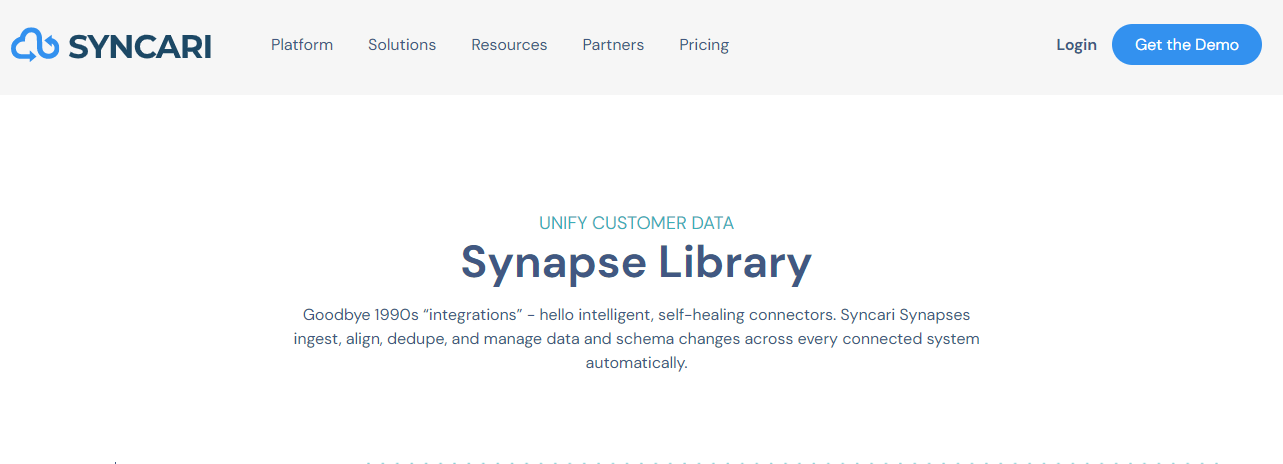
These connectors deeply understand both data and schema, allowing your customer’s entire stack to look and behave consistently.
The primary goal of Syncari Embed is to provide end-to-end visibility and control over data by automating data integration and synchronization processes.
Syncari Embed offers advanced customization options beyond traditional iPaaS (Integration Platform as a Service) solutions. You have the flexibility to tailor the integration workflows and processes to meet your specific business needs. 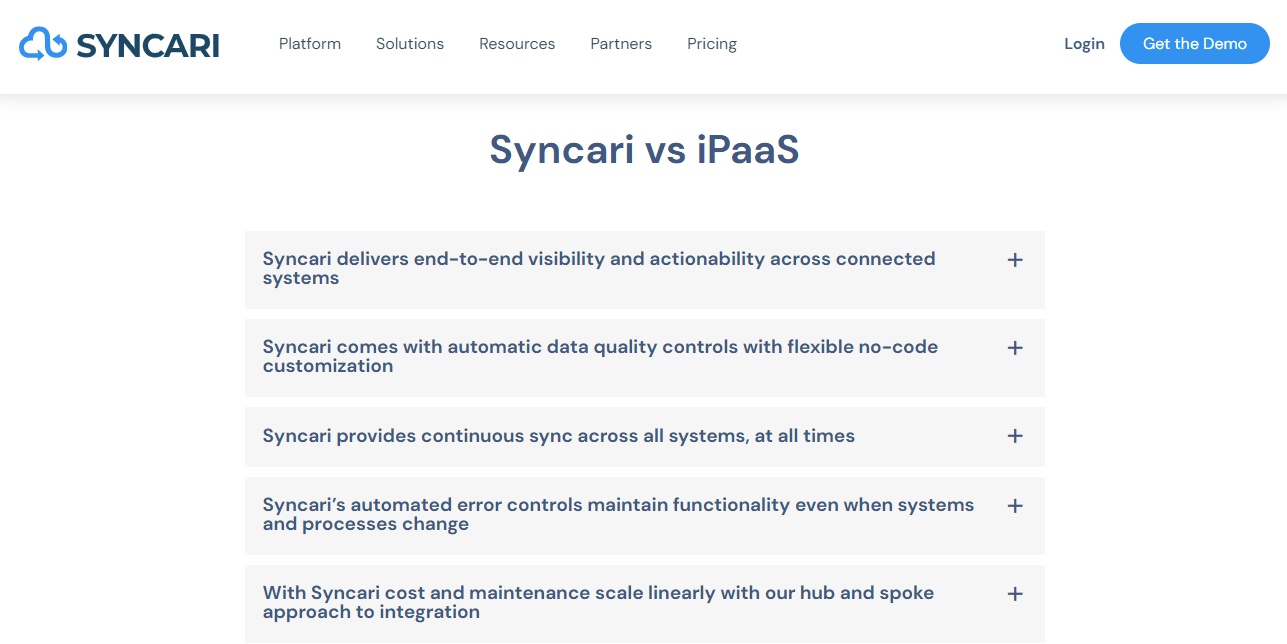
This level of customization empowers you to create data synchronization workflows that align perfectly with your unique requirements, saving you time and effort.
Syncari Pricing
Syncari’s pricing is based on the number of records you manage, making it easy to predict costs and avoid unexpected expenses. Each Syncari instance includes pipelines, connectors, API calls, tasks, and transactions. Build unlimited pipelines, connect multiple systems, and run them as often as needed, all without worrying about additional costs.
Conclusion
Selecting the ideal embedded integration platform is essential for managing your data effectively and improving the capabilities of your software products. This guide overviews the five best embedded integration platforms available today.
Each platform offers unique strengths and features that enable seamless data synchronization and integration.
Syncari stands out as an all-inclusive data automation solution. With its no-code data pipelines, customizable interface, and powerful analytics engine, Syncari enhances your data management capabilities.
Its bidirectional sync capabilities, advanced data quality controls, and support for complex data ecosystems enable you to synchronize data between your application and other systems efficiently.
To experience the benefits of Syncari firsthand, we recommend exploring a demo video that showcases the platform’s features and functionality. By choosing Syncari, you can unlock your data’s potential, streamline your workflows, and confidently make data-driven decisions.
